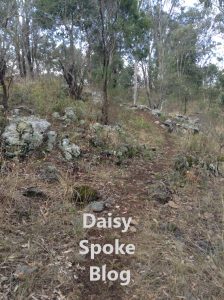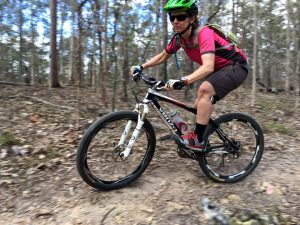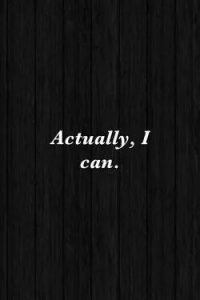There are so many life lessons I’ve learned from nature – pest management (aka “managing the habits that creep into your life”) is the latest one. This year we’ve been making a concerted effort to manage some of the unwanted weeds on our property, in particular tree pears. It’s taken a considerable investment of time, hard work, money and resources to uncover the best way to deal with them. It’s also got me thinking about personal habits that creep into our lives, and what we can do to manage those sorts of weeds and pests.
Pests have always been around
We’ve lived on our small bush property for many years. We’ve always had a few pests here and there but haven’t been overly concerned about them. They’ve had little impact on everything else so we haven’t considered them a problem. In the past we had a few cows and sheep grazing the grass. We’ve had no grazing stock for nearly 10 years now due to ongoing drought conditions. Even though I miss seeing those big beautiful cow eyes looking back at me, we’ve actually gained a lot of satisfaction from watching the native plants regenerate as a result. We’ve also relished the opportunity to make use of the land in other ways such as building mountain bike trails throughout the property.
The problem pest at my place
Apart from reduced stock, altered land use and drought conditions, other changes have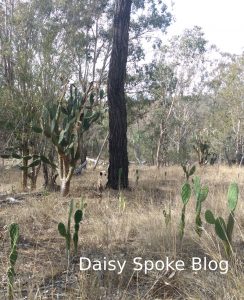 also gradually taken place – changes that we were blinded to until they became quite obvious and problematic. Tree pear is one of these changes. It has rapidly multiplied in the recent conditions. Not long ago it was a fairly insignificant pest, kept in balance by naturally occurring biological controls. Now it’s dominating the landscape. It very easily and quickly multiplies, so we now have a dense covering of tree pear of all sizes. Its growth rate is amazing and it thrives in the harsh conditions.
also gradually taken place – changes that we were blinded to until they became quite obvious and problematic. Tree pear is one of these changes. It has rapidly multiplied in the recent conditions. Not long ago it was a fairly insignificant pest, kept in balance by naturally occurring biological controls. Now it’s dominating the landscape. It very easily and quickly multiplies, so we now have a dense covering of tree pear of all sizes. Its growth rate is amazing and it thrives in the harsh conditions.
Managing the pest
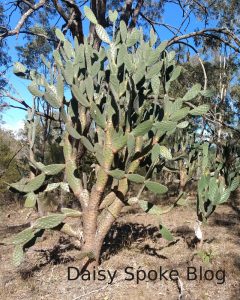 Uncovering how best to manage this pest has been exhausting, taking lots of hours, energy, research and trial and error. We’ve learned how critical it is to choose the ‘right’ strategy – the difference between getting numbers of tree pear manageable again, or increasing their numbers even more! They’re incredibly tough and resilient – I’ve got to admire them for that! We’ve persisted with our management strategy because we want to live in a balanced way, minimising the impact of our own lifestyle, and supporting environmental sustainability. It’s taken nearly 12 months to reach the point where we can see a positive outcome ahead. And we’ve learned lessons about keeping a closer eye on the pests out there and intervening earlier rather than later.
Uncovering how best to manage this pest has been exhausting, taking lots of hours, energy, research and trial and error. We’ve learned how critical it is to choose the ‘right’ strategy – the difference between getting numbers of tree pear manageable again, or increasing their numbers even more! They’re incredibly tough and resilient – I’ve got to admire them for that! We’ve persisted with our management strategy because we want to live in a balanced way, minimising the impact of our own lifestyle, and supporting environmental sustainability. It’s taken nearly 12 months to reach the point where we can see a positive outcome ahead. And we’ve learned lessons about keeping a closer eye on the pests out there and intervening earlier rather than later.
Habits can be like weeds and pests
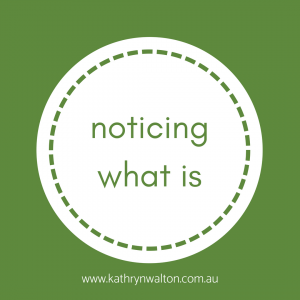 Unwanted habits can silently creep into our lives in the same way that the tree pear and other weeds and pests gradually take over tracts of land and impact the overall health of the environment. The habits can slowly, quietly and destructively begin to dominate your life in various ways. The damage shows up as it impacts your relationships, health and confidence. Reestablishing healthier habits requires a hard sustained effort over time, but the secret is in actually noticing that there is a problem in the first place.
Unwanted habits can silently creep into our lives in the same way that the tree pear and other weeds and pests gradually take over tracts of land and impact the overall health of the environment. The habits can slowly, quietly and destructively begin to dominate your life in various ways. The damage shows up as it impacts your relationships, health and confidence. Reestablishing healthier habits requires a hard sustained effort over time, but the secret is in actually noticing that there is a problem in the first place.
Audit your life
In the same way that it can be helpful to regularly have a good look around your property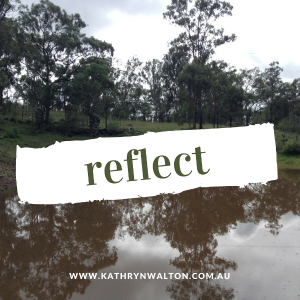 to check for pests and unwanted changes, it’s also vital that we review our personal habits from time to time. It’s often only when a crisis takes place that we take the time to do this, but it’s a healthy practice for any of us even when things seem to be going smoothly. When we take the time to reflect, notice and make adjustments, we are better able to keep on top of the pesky habits that impact negatively on ourselves, our relationships and the world around us.
to check for pests and unwanted changes, it’s also vital that we review our personal habits from time to time. It’s often only when a crisis takes place that we take the time to do this, but it’s a healthy practice for any of us even when things seem to be going smoothly. When we take the time to reflect, notice and make adjustments, we are better able to keep on top of the pesky habits that impact negatively on ourselves, our relationships and the world around us.
Questions to ask yourself
You don’t have to run away to the quiet of the desert or the tranquility of the mountains to review your life (although if you have the opportunity that could be amazing!) A more practical way for most of us is to simply take a few moments, or even a couple of hours, to ask ourselves a few questions. You might find it helpful to write your reflections down in a journal, make some art work about the topic, or have a conversation about these issues with a trusted person.
1. What have I got in my life that’s working for me?
2. What is not working so well in my life?
3. What is one action I could take that would make the biggest difference?
4. How can I make sure I follow through on that action?
5. What can I let go of?
6. What do I need to keep?
Change can be challenging
Even desired change can be very challenging and unsettling. We can experience a conflict of values, a simultaneous push and pull towards and away from the change. We might sense resistance from people and situations around us, as well as our own internal resistance. Be prepared for this, and push past the prickly bits!
Early intervention is best
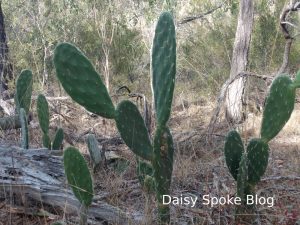 And so as I walk and run my home trails, I’ve been much more aware of the little cactus popping up. I’ve been investing a little bit of time and energy to carefully prise them out when I see them, right there and then. I’ve learned the hard way that this is a much easier and more effective way of dealing with the problem. Burying your head in the sand and avoiding seeing the issue for what it really is, only makes the problem bigger and more difficult over time. Sometimes those unhealthy unhelpful habits just seem to creep into our lives but with greater diligence and readiness to take action, we can keep them in their place, and maintain a more balanced life.
And so as I walk and run my home trails, I’ve been much more aware of the little cactus popping up. I’ve been investing a little bit of time and energy to carefully prise them out when I see them, right there and then. I’ve learned the hard way that this is a much easier and more effective way of dealing with the problem. Burying your head in the sand and avoiding seeing the issue for what it really is, only makes the problem bigger and more difficult over time. Sometimes those unhealthy unhelpful habits just seem to creep into our lives but with greater diligence and readiness to take action, we can keep them in their place, and maintain a more balanced life.
VLOG (Video Blog)
Did you know that I have a You Tube channel? Over the coming months I’ll be regularly posting videos and VLOGS over there. You can watch my latest VLOG on managing the pesky habits in your life by clicking here!
Discovering mountain biking as life’s ultimate parallel universe in her middle age,  Kathryn Walton shares information and reflections in Daisy Spoke that connect, inspire and self-empower women to make healthy choices for themselves. She integrates her love of physical exercise, family, nature, gardening and creative arts with her professional background in mental health social work to facilitate change with individuals, groups and communities of women who are committed to living life to the full.
Kathryn Walton shares information and reflections in Daisy Spoke that connect, inspire and self-empower women to make healthy choices for themselves. She integrates her love of physical exercise, family, nature, gardening and creative arts with her professional background in mental health social work to facilitate change with individuals, groups and communities of women who are committed to living life to the full.

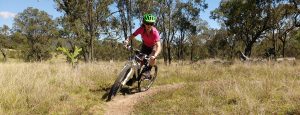

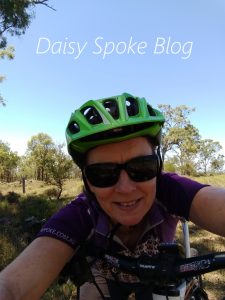 Daily exercise and general physical activity are crucial elements of feeling good. Just as some people might need to diligently take medication every day, I need to exercise every day. Exercise is nature’s way of stimulating the hormones which aid concentration, problem-solving, sleep, digestion, and mood. This daily dose of exercise rebalances our body’s systems resulting in wide-ranging benefits that no single medication can provide. The research is absolutely clear that regular medium to high intensity exercise can have a profound effect on health AND happiness.
Daily exercise and general physical activity are crucial elements of feeling good. Just as some people might need to diligently take medication every day, I need to exercise every day. Exercise is nature’s way of stimulating the hormones which aid concentration, problem-solving, sleep, digestion, and mood. This daily dose of exercise rebalances our body’s systems resulting in wide-ranging benefits that no single medication can provide. The research is absolutely clear that regular medium to high intensity exercise can have a profound effect on health AND happiness.
 Minds are such complex things! They wield a lot of power over our emotions and our actions (including sleep). But unless you notice what’s going on in your mind, and choose how much power to give it, your thoughts, assumptions and beliefs will control you instead of the other way around. The habit of being hooked by thoughts or strongly attached to them is limiting and anxiety-provoking. The key here is to begin by simply noticing what is happening in your mind, and by doing this with curiosity and without judgement. The power is in the noticing. You’ll collect all sorts of interesting bits of information about how your mind works, what thinking patterns it gets locked into, what beliefs and assumptions are behind it all, and how all of this impacts your physiology, your behaviours and your emotions. One of my favourite sayings is “Don’t believe everything you think!” because we can learn to stand back, notice the thought and choose whether to believe it, or not.
Minds are such complex things! They wield a lot of power over our emotions and our actions (including sleep). But unless you notice what’s going on in your mind, and choose how much power to give it, your thoughts, assumptions and beliefs will control you instead of the other way around. The habit of being hooked by thoughts or strongly attached to them is limiting and anxiety-provoking. The key here is to begin by simply noticing what is happening in your mind, and by doing this with curiosity and without judgement. The power is in the noticing. You’ll collect all sorts of interesting bits of information about how your mind works, what thinking patterns it gets locked into, what beliefs and assumptions are behind it all, and how all of this impacts your physiology, your behaviours and your emotions. One of my favourite sayings is “Don’t believe everything you think!” because we can learn to stand back, notice the thought and choose whether to believe it, or not.
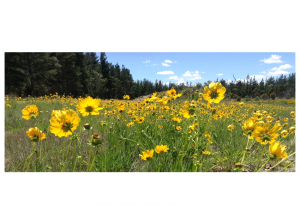
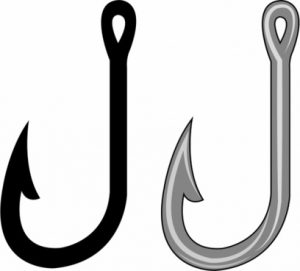 thought, we often don’t even realise that we’ve grabbed hold of it. We can become firmly attached to it and we can have difficulty letting it go. We can find ourselves stuck, squirming and wriggling with the discomfort just as a fish does as it’s reeled in from the water.
thought, we often don’t even realise that we’ve grabbed hold of it. We can become firmly attached to it and we can have difficulty letting it go. We can find ourselves stuck, squirming and wriggling with the discomfort just as a fish does as it’s reeled in from the water. Daily practice of simply noticing your thoughts as they arise during an activity helps to train your brain to notice thoughts arising at other times, and to notice that they are simply thoughts or mental events. If you find the fish hook imagery useful, you can notice the hooks (or thoughts) being cast out, and you can notice which hooks (or thoughts) you cling on to.
Daily practice of simply noticing your thoughts as they arise during an activity helps to train your brain to notice thoughts arising at other times, and to notice that they are simply thoughts or mental events. If you find the fish hook imagery useful, you can notice the hooks (or thoughts) being cast out, and you can notice which hooks (or thoughts) you cling on to. Kathryn Walton shares information and reflections in Daisy Spoke that connect, inspire and self-empower women to make healthy choices for themselves.
Kathryn Walton shares information and reflections in Daisy Spoke that connect, inspire and self-empower women to make healthy choices for themselves.
